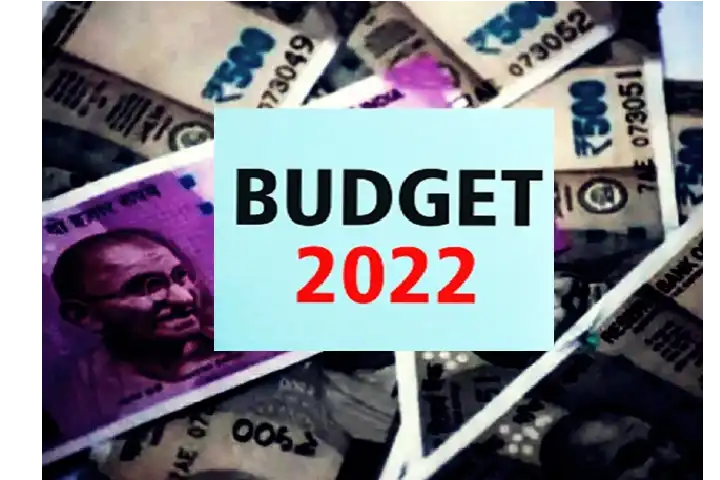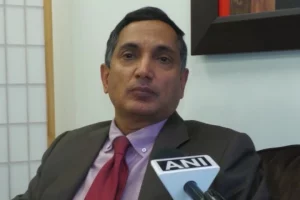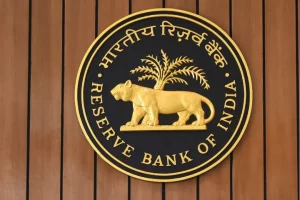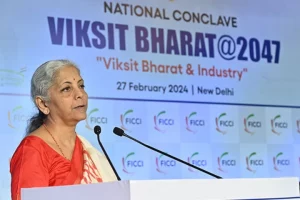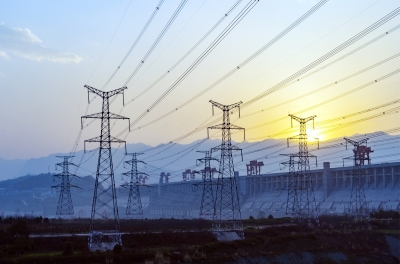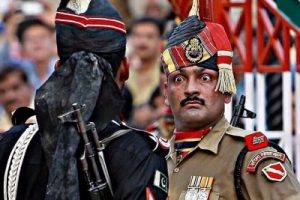As India thrives to touch the $5 trillion economy, will Finance Minister Nirmala Sitharaman’s fourth crucial budget amid the ongoing Covid 19 pandemic catapult growth and employment generation? Gopal Krishna Agarwal, BJP’s national spokesperson on economy speaks to India Narrative on the Budget, which he said was “a trailblazer.” An excerpt of the interview.
The FM had that the Budget will focus on Amrit Kaal. What does that mean?
India is at 75. We will approach 100 years of independence. This journey marks the Amrit Kaal. The budget lays the blueprint to the roadmap to that. Therefore, this Budget was a crucial one, especially as it was delivered at a time when global uncertainties continue. There are no freebies, no political appeasement but the focus is on strengthening our economy by boosting infrastructure and supporting sectors that need help. Importantly it speaks of urbanisation of tier II and tier III cities, which will also propel growth for the country in the coming years further facilitation of ease of doing business and ease of living. This surely establishes the fact that India’s post pandemic economic recovery is on a firm footing.
Vaccination programme is key. But India still has a long way to go. What is the plan?
Vaccination programme is going on as per schedule. More than 166 crore of vaccines have been administered. As many as 71 crore are now fully vaccinated. We are committed to vaccinating the whole population. The last mile connectivity is also the responsibility of the state governments. The states also need to do their bit in mobilising people and ensure that they are vaccinated. Some opposition parties had been irresponsible in their approach to the vaccination programme but now they are also on board. Certain segments require more push, which the state governments must address.
Do you thing enough has been done for job creation?
FM spoke about PM Gati shakti – it is about strengthening connectivity through roads, railways, airways and waterways. This is getting a big push. Capital expenditure has been increased by about 35 per cent—it has gone up from to Rs 7.50 lakh crore—this is huge. It will not only provide a big push to infrastructure sector and overall growth but will create additional jobs of 60 lakh.
That apart, Rs 50,000 crore has been additionally provided for the contact service industry such as hospitality and tourism. The micro small and medium enterprises sector has also been given a credit guarantee facility which is over and above whatever has been already extended.
Also Read: Nirmala’s 4th budget targets economic growth & recovery amid Covid-19 pandemic
An additional fund allocation of Rs 1 lakh crore has also been made for the state governments. So all these measures put together will push growth and investments. The FM has said that government expenditure will crowd in private investment. This will generate further employment opportuniities.
Despite the pandemic, there has been a growth in tax revenue. The budget estimate for next financial year is even higher. Can you throw light on the calculation?
This is a heartening fact that despite bringing down the tax rates, overall collections have gone up. Let us take the case of GST (goods and services tax) –the revenue neutral rate was estimated at 15-15.5 per cent but now the average GST is 11.6 per cent, much lower than what was envisaged. It is heartening for the common man. In January, GST collection is 1,40,986 crore—the highest so far. And collections have been steadily increasing. This shows that economic activity is picking up at a fast pace and more importantly formalistion of the economy is on track. Direct tax collection has also increased. And this is despite slashing of corporate tax rates. Along with this, the FM has also chalked out tha fiscal consolidation plan. For the next FY, fiscal deficit is estimated at 6.4 per cent and by 2025, we are expected to be at 4.5 per cent.
Is formalisation of economy really taking place?
If you look into EPFO (Employees Provident Fund Organisation) and ESI (Employees’ State Insurance) data you would notice that registration has increased. This is an indication that formalization of the economy is actually taking place. The e-shram portal (a national online database of unorganised workers) has also been a success. Registration on this portal has also gone up. I fact it is increasing by the day. Now this is a big initiative for the labour force in the informal sector. They are now getting all the benefits.
Also Read: US-India forum lauds Union Budget, calls it 'measured, pragmatic'
Besides, data centres are now being appreciated and promoted by the government. They have been given the status of infrastructure. Data will help in policy making and will further push formalisatio of the economy, which is resulting in increased tax collection.
Consumption is still weak. Your thought?
We agree that private consumption has not picked up the way we would have liked. Ultimately our effort if to boost infrastructure through increase in capex. It will create demand in the economy—steel, cement and construction sector will get a boost. Not just that it will also push money into the informal sector. The impact on the logistics sector will also be felt. All these put together will provide a fillip to the rural sector. Besides, there are several social sector schemes running as well to help the rural sector. Once they spend, overall consumption will increase.
MSP procurement hasl been increased. Warehousing, supply chain, Food processing industry are already being upgraded. This will be a big boost to the agriculture sector.






